Mayan Gods: Ixchel
Ixchel (Ischel), Chak Chel, The Rainbow Lady, White Face, Earth & Moon
“What have you been doing? Our hearts became weary, so we came,” they said.
“Look at the front of my jug. It cannot be sealed off,” replied their grandmother.
—Popol Vuh
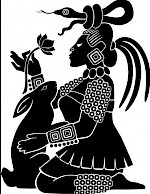
 The goddess Ixchel presides over a number of ideas. The image at left is a modern bastardization of the colorized images at right, which represent several distinct ideas. Keep in mind, little more than four mayan books, or codices, managed to survive destruction by Spanish priests. Ixchel has been associated with gods O and I (pictured right). Although these depictions are very different--one a maiden, the other a crone--they are related. Speculation has led to a connection with cycles of life involving childbirth (the maiden) and age/disease (the crone). Ixchel's image has been altered for various purposes, especially in recent decades, but she is broadly associated with medicine/disease, fertility/childbirth/midwifery, divination and the moon.
The goddess Ixchel presides over a number of ideas. The image at left is a modern bastardization of the colorized images at right, which represent several distinct ideas. Keep in mind, little more than four mayan books, or codices, managed to survive destruction by Spanish priests. Ixchel has been associated with gods O and I (pictured right). Although these depictions are very different--one a maiden, the other a crone--they are related. Speculation has led to a connection with cycles of life involving childbirth (the maiden) and age/disease (the crone). Ixchel's image has been altered for various purposes, especially in recent decades, but she is broadly associated with medicine/disease, fertility/childbirth/midwifery, divination and the moon.
As the moon waxes and wanes, Ixchel transitions from maiden into mother and finally crone. She often carries a jug, which she continually empties onto the earth as the rains pour and the crops grow. She also wears a snake in her hair--an ancient symbol of wisdom and medicine; she understands illness and caretaking. She is the village medicinewoman. There are many statues of her as goddess O in Cozumel or small ones for personal altars.
 She is associated with rabbits. The rabbit is a symbol of fertility and a nod to the lunar landscape. On the surface, the colors and craters of the moon can easily look like a rabbit; quickly disappearing into the darkness each month. Because the moon cycles are used to determine harvest time, Ixchel is most venerated during "Zip," which is the Mayan name of the month of harvest. It runs from late August to mid-September.
She is associated with rabbits. The rabbit is a symbol of fertility and a nod to the lunar landscape. On the surface, the colors and craters of the moon can easily look like a rabbit; quickly disappearing into the darkness each month. Because the moon cycles are used to determine harvest time, Ixchel is most venerated during "Zip," which is the Mayan name of the month of harvest. It runs from late August to mid-September.
Ixchel is said to have fled a kingdom to the east, which was destroyed in a flood, with her lover, Itzamna the Sun King. Ixchel saved Itzamna's almanac--the Mayan calendar--and impressed him with her beautiful weaving. Their union created the Bacab, four deities who hold up the corners of creation, 13 children (two who helped create the world) and many other gods; the god of corn, the gods of sacrifices and stars, and the goddesses of the waters, night and paradise.
There are several places especially dedicated to her worship. The islands of Cozumel and Isla Mujeres (Isle of Women) both have temples dedicated to Ixchel. All Mayan women would make the pilgrimage from Pole (modern-day Xcaret) to the sacred island by canoe at least once in their lives. On the island they could consummate their vows or pray for healthy childbirth. The San Gervaiso ruins on Cozumel include smooth stone matrimonial beds for the wedding night.

Uxmal has another large monument dedicated to Ixchel. The largest pyramid of Uxmal, called the Pyramid of the Magician, is a reference to Ixchel; a magician who could turn the Sun King's favor into a bountiful harvest. The form of a pyramid piercing the sky may be a reference to the magic of life sprouting up from the dirt. The area is also heavily adorned with carvings of the rain god Chaac, a god often seen alongside Ixchel because of their shared association with crops. This agricultural significance explains why Uxmal is located in the fertile heart of the peninsula.
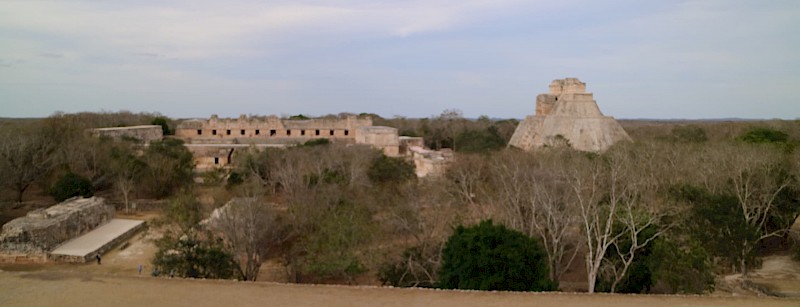
As the moon goes through her waning cycles, Ixchel ages and empties her jug onto the earth. As an old woman she sits at a loom and weaves a skirt with a pattern of crossed bones. This pattern is another decorative relief common to the stones of Uxmal. When Ixchel dies, dragonflies sing over her for 183 days.
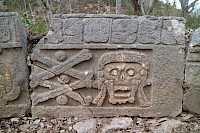 After such time, she arises to find Itzamna, the Sun King, in his palace. On the way, she flirts with his brother, the Morningstar. This upsets the perpetually jealous Sun King, who flies into a jealous rage. At this point, Ixchel is tired of the Sun King's behavior and resolves to hide from him. Hidden in her Temple of Night she nurtures Earth's pregnant women.
After such time, she arises to find Itzamna, the Sun King, in his palace. On the way, she flirts with his brother, the Morningstar. This upsets the perpetually jealous Sun King, who flies into a jealous rage. At this point, Ixchel is tired of the Sun King's behavior and resolves to hide from him. Hidden in her Temple of Night she nurtures Earth's pregnant women.
Ixchel is responsible for the formation of a baby in the mother’s womb and determines if the child will be male or female. Mayan midwives place her image, typically carved in wood, under the birthing bed.
Readers have pointed out many great resources for scholarship on the gods. One source to check out is Ric Hajovsky's The True History of Cozumel; it's available on Amazon and highly recommended. From a narrative point of view, Ixchel is the cycles of the moon, which is a vehicle to understand the cycles of time. Venerate Ixchel and, during Zip, she will bless you with a good harvest.
Do you have more information about Ixchel? We love to learn more every day so leave us a message in the comments and...




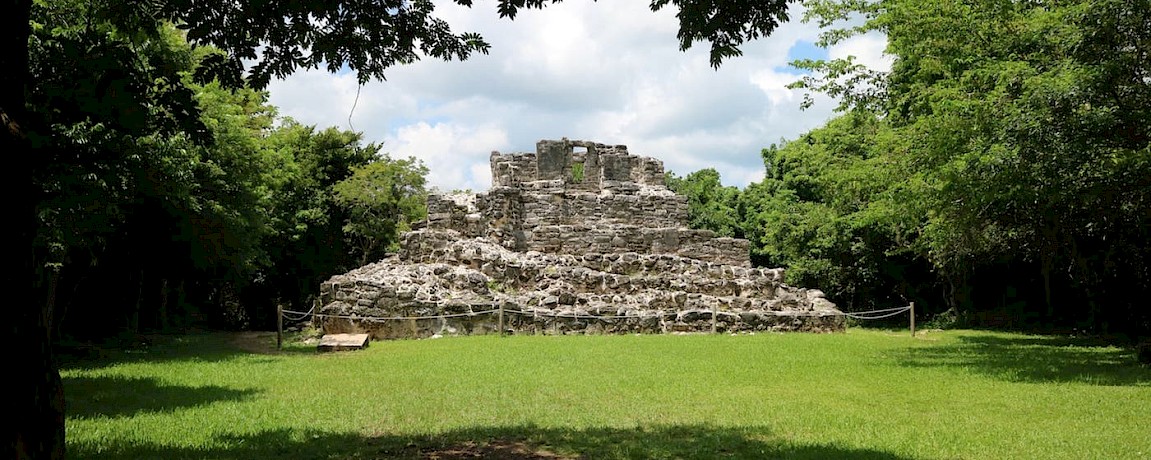
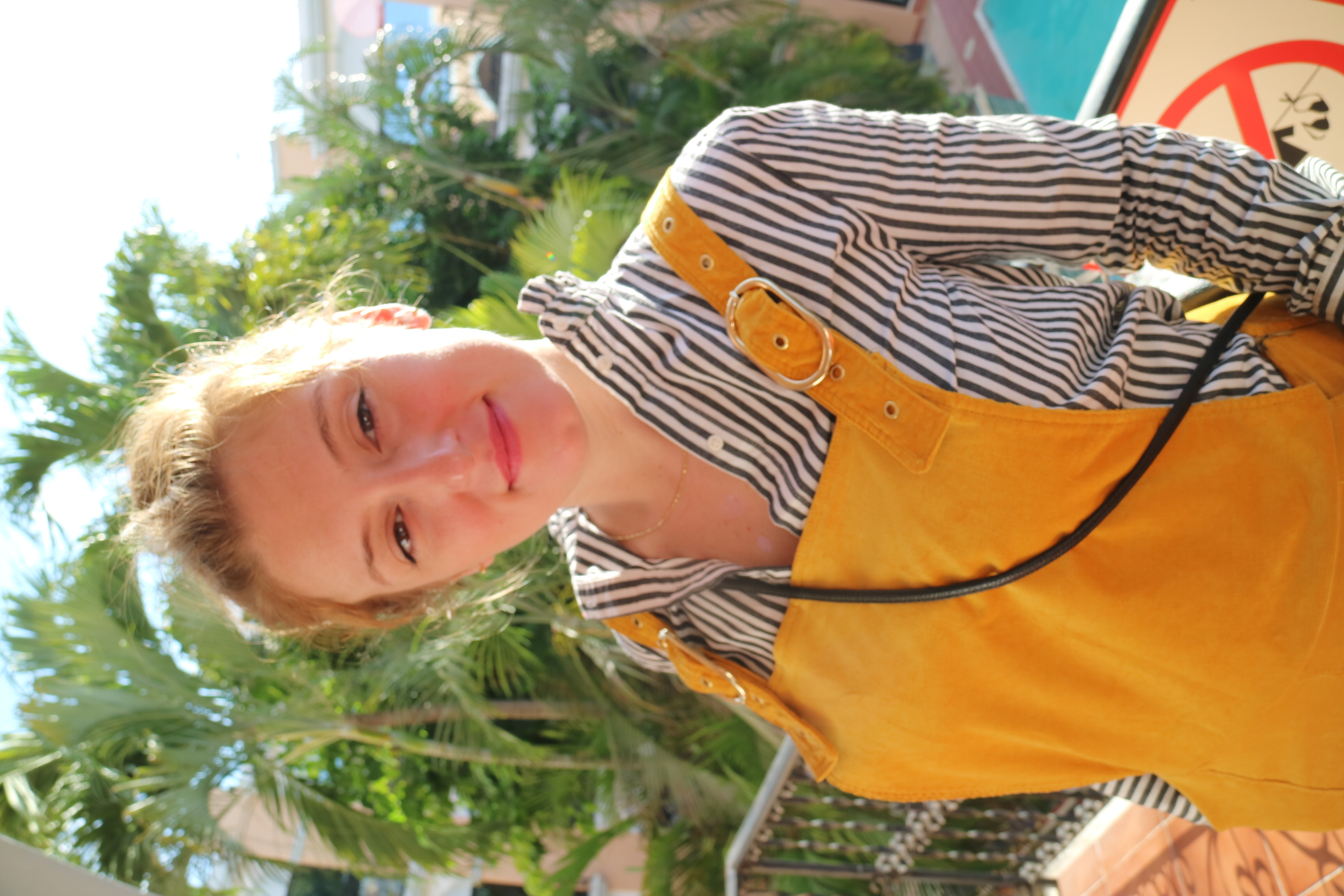


Comments
Markelle 7 years ago
Have you ever compared Goddess Nut or Brigid to Ix’Chel? So fascinating! I wonder if there are any others.... I went to San Gervaso in 2008 and had a sun the next year. He is extraordinary.
Reply
(0 to 1 comments)